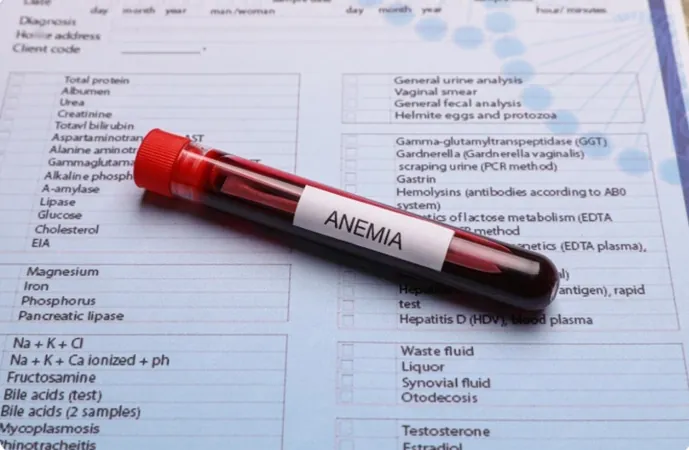
Singapore Leads Global Initiative to Combat Anaemia: A New Hope for Millions
2025-09-11
Author: Ming
A Groundbreaking Initiative Against Anaemia
In a significant move to tackle a global health crisis, Singapore's Duke-NUS Medical School has partnered with a worldwide team of experts to craft an innovative, evidence-based strategy aimed at combating anaemia—a condition that currently affects nearly two billion people around the globe.
Anaemia: A Hidden Health Epidemic
Anaemia occurs when the body lacks sufficient healthy red blood cells to carry oxygen effectively. While iron deficiency tops the list of causes, other contributing factors include nutrient shortages, chronic illnesses, and infections like malaria and hookworm—each varying by region. Alarmingly, anaemia often takes a backseat in health discussions despite being a formidable barrier to maternal well-being, child survival, and economic development.
The Urgent Call for Action
Back in 2015, the United Nations aimed to halve anaemia cases among women of childbearing age by 2030. Fast forward nearly a decade, and it’s clear many countries are lagging far behind this ambitious goal. The research highlights that in numerous low- and middle-income nations, essential interventions remain either inaccessible, prohibitively expensive, or vastly underutilized.
Tailored Solutions Over One-Size-Fits-All
The team's analysis evaluated how much progress individual countries can realistically achieve by 2030 via effective measures like staple food fortification, iron supplements, and preventive malaria treatments during pregnancy. Their findings suggest that the ambitious Sustainable Development Goal of a 50% reduction in anaemia rates is out of reach with the current resources and strategies in play.
Country-Specific Achievements: The Singapore Example
The disparities between nations are stark. For instance, Singapore can realistically aim for a 25% reduction in anaemia among women of reproductive age—still falling short of the global target, but a significant advance due to its robust healthcare system and high antenatal care coverage. Currently, Singapore's anaemia prevalence stands at 18.4% among this demographic.
Challenges in Neighboring Nations
Contrastingly, Indonesia is projected to achieve only a 9% reduction, hampered by limited healthcare funding, while Malaysia could see a 28% decrease. These variations highlight the necessity for tailored health goals rather than rigid global targets, ensuring that resources are utilized where they can yield the greatest impact.
A Bright Future Ahead
The research team is now sharing these critical insights with the World Health Organization. They aim for future health and nutrition initiatives to embrace a similar country-specific, evidence-driven framework. By harnessing improved data, innovative funding strategies, and smarter policies, nations have a genuine opportunity to make strides in reducing anaemia and enhancing public health worldwide.



 Brasil (PT)
Brasil (PT)
 Canada (EN)
Canada (EN)
 Chile (ES)
Chile (ES)
 Česko (CS)
Česko (CS)
 대한민국 (KO)
대한민국 (KO)
 España (ES)
España (ES)
 France (FR)
France (FR)
 Hong Kong (EN)
Hong Kong (EN)
 Italia (IT)
Italia (IT)
 日本 (JA)
日本 (JA)
 Magyarország (HU)
Magyarország (HU)
 Norge (NO)
Norge (NO)
 Polska (PL)
Polska (PL)
 Schweiz (DE)
Schweiz (DE)
 Singapore (EN)
Singapore (EN)
 Sverige (SV)
Sverige (SV)
 Suomi (FI)
Suomi (FI)
 Türkiye (TR)
Türkiye (TR)
 الإمارات العربية المتحدة (AR)
الإمارات العربية المتحدة (AR)